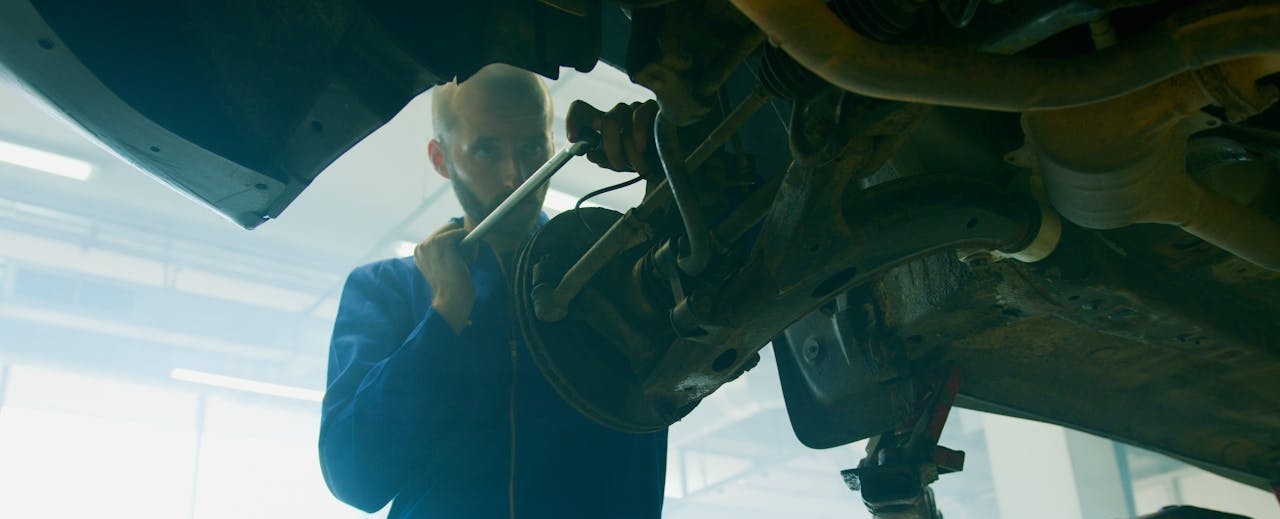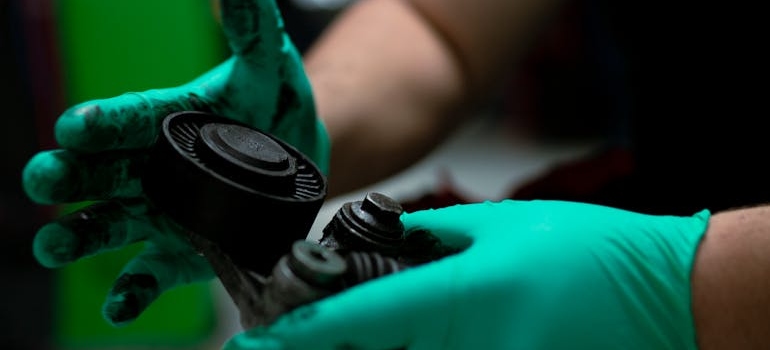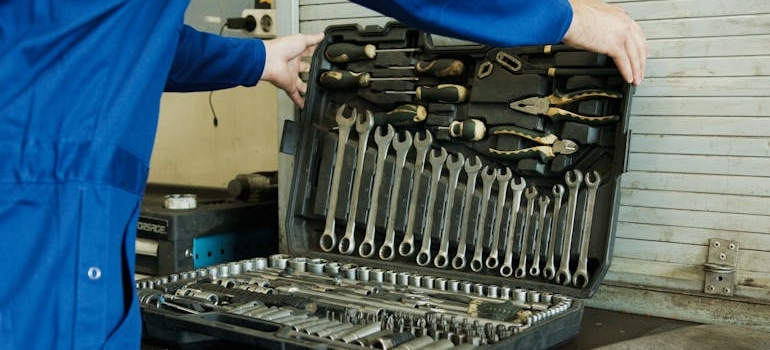Guidelines for storing car parts
get a quote
Are you aware of the rapid deterioration that can befall your car parts if not stored correctly? Even a brief stint in a suboptimal environment like a damp basement can compromise the quality and functionality of vital car components. Adopting a proactive approach is essential in your quest to optimize the longevity and performance of stored car parts. Every step matters, from selecting the right temporary storage Seattle conditions to meticulously preparing each part. So, here’s your comprehensive guide to effectively storing car parts, ensuring they remain in peak condition and ready for when you need them most.
The battle against moisture in car part storage
Moisture: the arch-nemesis of any stored car part. But why is moisture so damaging, and what can you do about it? The simple truth is that automotive components are highly susceptible to environmental conditions. Left unchecked, moisture can usher in rust and corrosion, significantly shortening the life of essential parts.
What’s your first line of defense? Identifying a dry and stable environment to house your parts. Have you considered utilizing specialized car tool storage solutions or dedicated areas in your home, such as a garage or workshop? These options offer protection against moisture and provide easy access and convenience.

However, if a suitable dry environment at home isn’t feasible, mobile storage pods for inventory storage in Seattle are an excellent alternative. These portable units ensure a controlled environment that combats moisture, which is critical for maintaining the integrity of your car parts. Easily accessible and convenient, these solutions deliver protection directly to your doorstep, offering a seamless way to safeguard your automotive components against environmental threats.
Choosing the ideal location for storing car parts
When home storage isn’t feasible due to space constraints—think large engine car parts or exterior car parts—where can you turn? The answer lies in finding a reputable storage facility. However, selecting the right facility involves more than a quick online search. Have you visited potential sites to inspect them firsthand?
Mobile storage options offer a flexible and secure alternative to traditional storage facilities. These short term storage Seattle units allow you to assess and maintain the cleanliness and condition of your storage environment directly, providing a reliable safeguard against potential issues like moisture or poor maintenance that could compromise the integrity of your parts.
This step is crucial to ensure that the conditions within will not jeopardize the integrity of your parts. During visits, assess everything from cleanliness to security measures. Consider it a red flag if you notice any signs of poor maintenance or moisture.

Preparing your car parts for storage
How you prepare your interior car parts and other components before storage can significantly impact their preservation. Did you know that residual oils and fluids can accelerate degradation? Hence, here are the key steps to prepare your parts for storage effectively:
- Avoid Water: Use water-free methods to prevent rust. Opt for specialized cleaners designed specifically for automotive parts to remove all contaminants effectively.
- Target Specific Contaminants: Focus on removing grease, dirt, and old lubricants that can degrade materials over time.
- Choose Suitable Lubricants: Select high-quality lubricants tailored to the material of your parts, which will provide a barrier against moisture and corrosion.
- Apply Evenly: Ensure an even application over all surfaces to create a uniform protective layer.
Inspection: - Check for Damage: Inspect each part for any signs of wear or damage before storing them in mobile storage containers Seattle offers. Addressing these issues now can prevent further deterioration.
- Seal Openings: Cover any openings or orifices to prevent the ingress of pests, dust, or additional moisture.
- Pre-Storage Drying: Ensure that all parts are completely dry after cleaning and before lubrication to avoid trapping moisture.
Additionally, for the utmost care, consider enlisting professional cleaning services. A mechanic can perform a comprehensive cleaning that guarantees no residue is left behind, ensuring your parts remain in optimal condition during storage. It will enhance the parts’ longevity and maintain their readiness for future use.
Effective packing techniques for car tools and parts
Now, let’s discuss the final hurdle: packing. How you pack your parts can drastically affect their condition over time. For smaller items like car tools, individual wrapping in soft cloth followed by placement in sturdy cardboard boxes might suffice. This method ensures each tool is cushioned and protected from scratches and other minor impacts. But what about larger items like engines?

These require robust solutions such as wooden crates or custom-designed pallets to ensure they are shielded from physical damage. Consider using foam inserts or bubble wrap, which can fill any voids and prevent movement within the container. Utilizing advanced packing techniques not only secures your parts from damage but also preserves their condition over time.
Ensuring longevity and readiness
In summary, effective car parts storage isn’t just about finding a dry spot. It’s all about a comprehensive approach encompassing environment selection, preparation, and packing. If you successfully manage these aspects, you’ll preserve the functionality and appearance of your car parts and save on potential future costs associated with damage or degradation. Are you ready to implement these expert strategies to ensure your car parts are stored perfectly?
Should you decide to adhere to these guidelines for storing car parts and find a suitable Lynnwood self-storage facility, you position yourself as a knowledgeable and proactive car owner or mechanic. Moreover, you become fully equipped to handle the nuances of car part storage. Hence, whether you’re storing a simple set of car tools or an entire engine, the principles remain the same: protect, preserve, and prepare.
